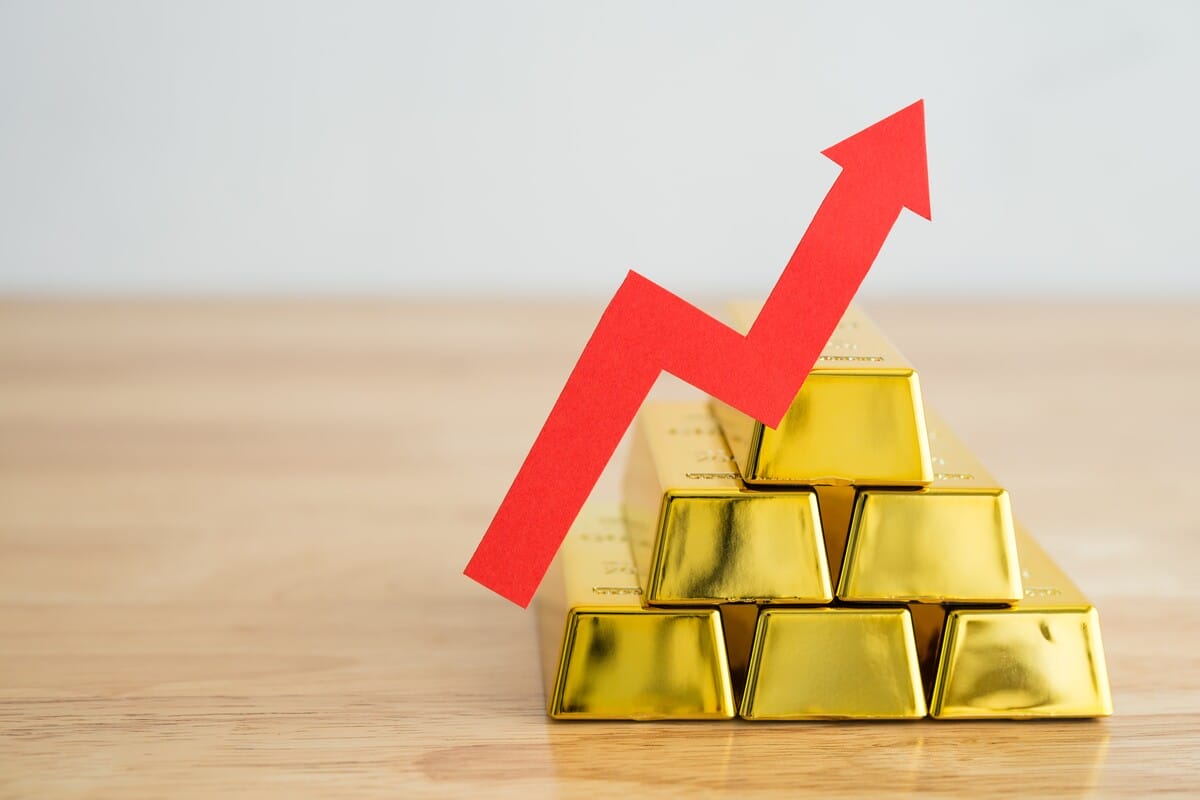Gold prices surged to a new record high on Friday as new tariff plans by U.S. President Donald Trump raised concerns over an intensifying global trade war, prompting investors to seek safe-haven assets like gold.
In the UAE, gold rates saw notable gains, with 24-carat gold rising AED3.75 to AED370.25 and 22-carat increasing by AED3.5 to AED343. In addition, 21-carat gold climbed AED3.25 to AED328.75, and 18-carat gold ticked up AED2.75 to AED281.75.
Globally, spot gold gained 0.95 percent to $3,078.82 as of 6:05 GMT, after hitting an all-time high of $3,082.4 earlier in the session. Gold prices gained 1.8 percent so far this week, placing it on track for a fourth straight weekly gain. Meanwhile, U.S. gold futures jumped 0.96 percent to $3,120.62.
The U.S. dollar index fell 0.02 percent to 104.31, making bullion more attractive for other currency holders.
Key factors driving gold’s rally
Several factors are driving the latest rally in gold prices, including the U.S. trade policy, U.S. fiscal policy, geopolitical tensions, and a growth slowdown. Gold is expected to hit its next milestone, the $3,100 mark, if geopolitical and trade tensions persist.
Uncertainty surrounding U.S. tariffs, renewed hope for interest rate cuts, geopolitical conflicts and central bank buying have all fuelled gold’s surge over the $3,000 milestone this year.
“Prices of gold are trading around record highs based on our price target of $3,300 as the near nonstop rally continues. Despite fears about tariffs, the market is nevertheless supported by strong haven demand, ongoing central bank purchases, especially in Asia, and institutional investors’ revived interest in bullion-backed exchange-traded funds (ETFs),” stated Ole Hansen, head of commodities strategy at Saxo Bank.
Global trade war fears propel safe-haven demand
Canadian Prime Minister Mark Carney said he would respond with trade actions if Trump imposes new auto tariffs. On Wednesday, Trump announced a 25 percent tariff on imported cars and light trucks starting next week, further widening the global trade war.
The new tariffs will apply to vehicles assembled in countries with free-trade agreements with the U.S., such as Canada, Mexico, and South Korea. These nations, along with Japanese and European car manufacturers from Germany, Italy, and the U.K., will be heavily impacted by the new measures.
Trump is also set to implement reciprocal tariffs on April 2, which could raise inflation, impact economic growth, and escalate trade tensions on a global scale.
“The precious metal’s 16.56 percent year-to-date rally is also being driven by robust central bank demand. Moreover, gold-backed ETFs, which had endured persistent outflows over the last four years, have now enjoyed eight consecutive weeks of inflows. This marks the longest weekly streak of additions since October 2024,” stated Vijay Valecha, chief investment officer, Century Financial.
Fed policymakers cautious amid rising uncertainty
Gold, traditionally viewed as a hedge against economic and political instability, thrives in a low-interest rate environment. In the past year, gold prices have gained over 35 percent, driven by multiple rate cuts by the U.S. central bank and rising geopolitical tensions in key regions.
Richmond Federal Reserve President Tom Barkin said that the central bank’s current “moderately restrictive” monetary policy is appropriate, given high levels of uncertainty and rapid policy changes in the U.S. government.
Investors now await the U.S. personal consumption expenditures data, due later in the day, which could offer additional insight into the U.S. interest rate path. Last week, the U.S. central bank held its benchmark interest rate steady but signaled additional cut rates later this year. Non-yielding assets like gold tend to thrive in a low-interest-rate environment.
“Rising inflation and the prospect of a tariff-driven economic downturn in the U.S. have increased concerns about stagflation, which has historically been a gold-friendly climate. Given current risks to U.S. equities, especially high-valuation sectors like technology, an allocation of 5–10 percent remains a prudent strategy. Gold mining stocks, which had been in decline for a long time, have rebounded as investors look for alternatives to overheated equity sectors,” added Hansen.
Read: Oil prices dip to $73.70 on Trump’s auto tariffs despite tighter supply risks
Other precious metals
As gold prices surged to a new high, the precious metals market continued to see negative movement. Spot silver fell 0.22 percent to $34.33 an ounce, platinum lost 0.19 percent to $983.94, and palladium declined 0.04 percent to $974.95.








